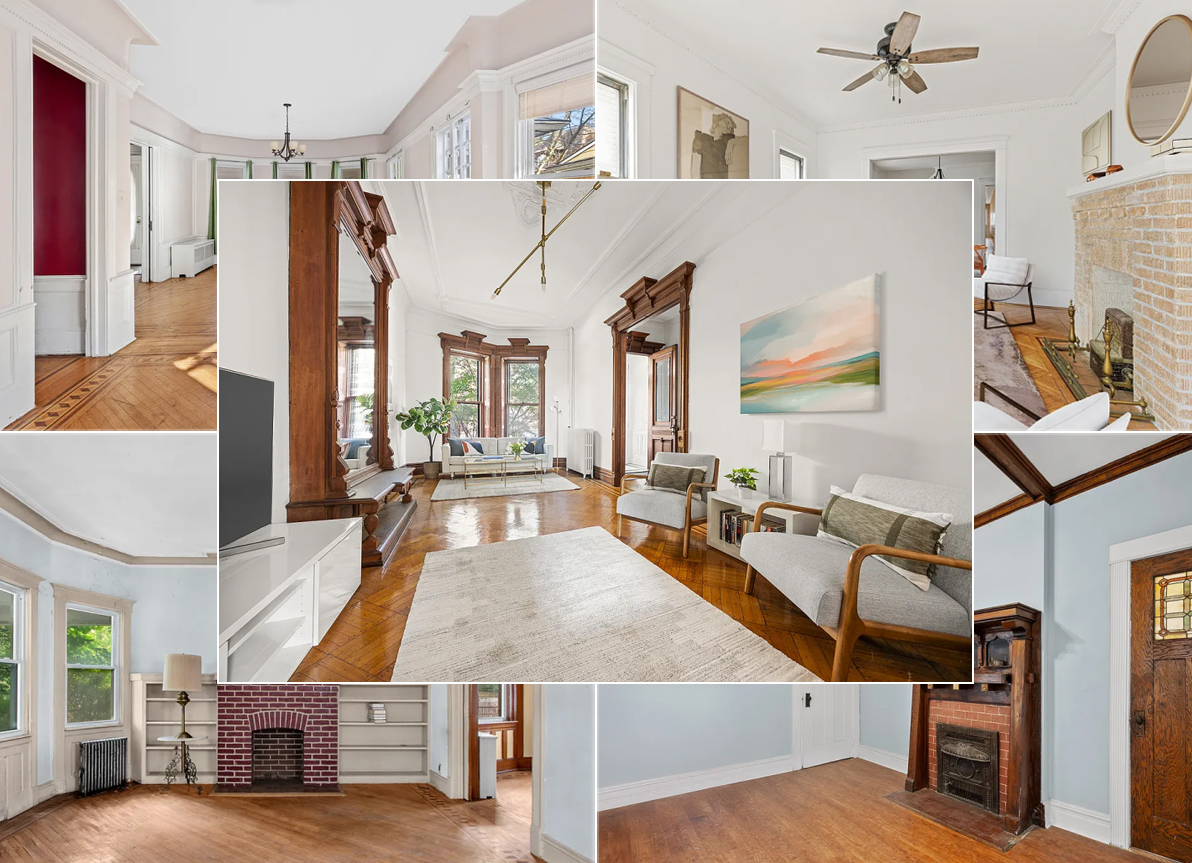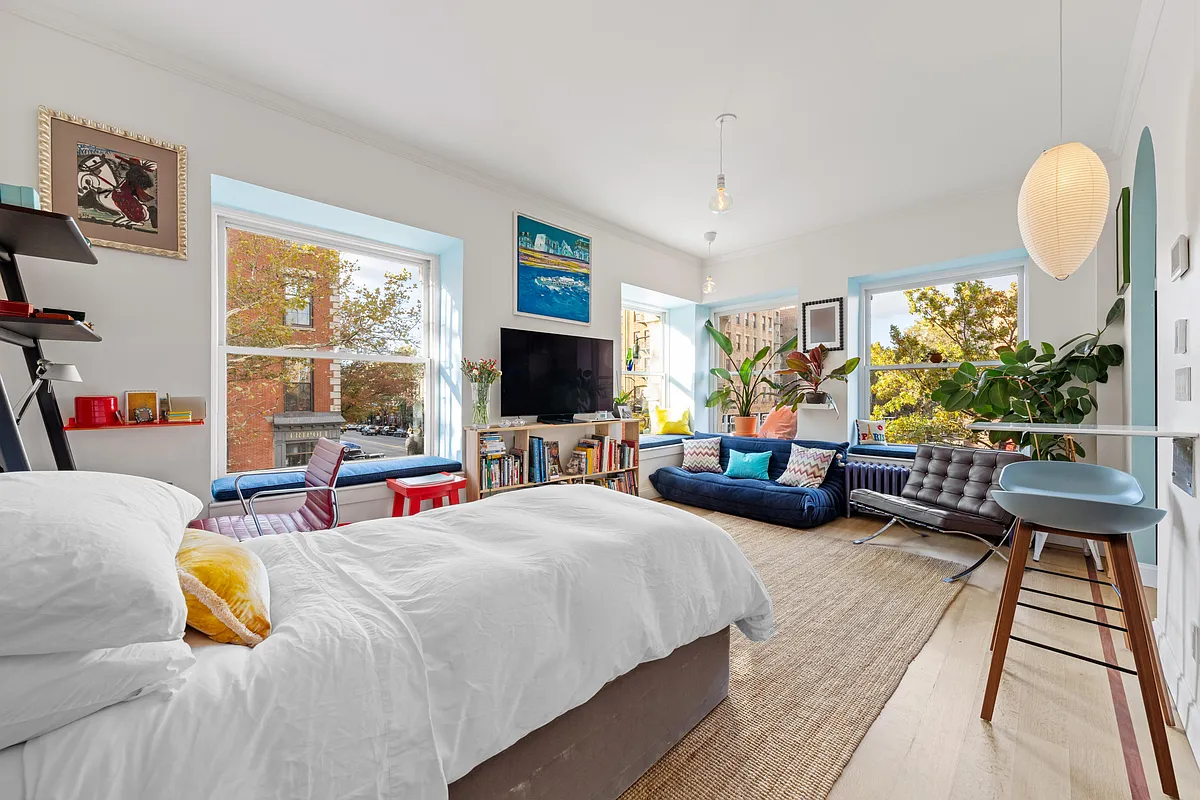Building of the Day: 715 St. Johns Place
(View along Bedford Avenue) Brooklyn, one building at a time. Name: Former Monastery of Our Lady of Mount Carmel Address: 715 St. Johns Place, corner of Bedford Avenue Neighborhood: Crown Heights North Year Built: Late 1920’s Architectural Style: Pared down Northern Italian Renaissance Architect: Unknown Landmarked: No The story: In 1907, a small group of…


(View along Bedford Avenue)
Brooklyn, one building at a time.
Name: Former Monastery of Our Lady of Mount Carmel
Address: 715 St. Johns Place, corner of Bedford Avenue
Neighborhood: Crown Heights North
Year Built: Late 1920’s
Architectural Style: Pared down Northern Italian Renaissance
Architect: Unknown
Landmarked: No
The story: In 1907, a small group of Carmelite nuns moved into an old, but large wood framed house on the corner of St. Johns Place and Bedford Avenue, called the McCann Mansion. The neighborhood was mostly Irish and Italian, at this time, and the nuns were from an order of cloistered nuns who had dedicated their lives to isolated contemplation and prayer. In the late 1920’s Helen Morton, the daughter of Levi P. Morton, an ex-Governor of New York State and former Vice President under President Benjamin Harrison, had this monastery built for them. Miss Morton was a wealthy lady of New York high society who would carry on a Gilded Age tradition of marrying into European aristocracy. She married the Comte Boson de Perigord, son the Duc de Tallyrand-Perigord of France, in 1901. Her sister, Alice, also popular in high society, and the wife of a prominent financier, died suddenly in 1917, at the age of 38, from a burst appendix. As she lay dying, she told her sister that she had had a vision of St. Theresa, who asked her Will you build my monastery? Helen Morton would carry out this vision, in the form of a large self-contained complex, with a chapel, workrooms, cloister, garden, living and dining quarters, all surrounded by a high concrete wall, keeping outsiders out, and the nuns as cloistered as their founding member, St. Theresa of Avila, had desired, in the 1500’s.
For almost 80 years, the nuns lived a medieval monastic life, with little communication with the outside world. Donations and prayer requests were put into a large revolving barrel built into the wall, called a turn, which could spin and be opened by the nuns on the inside of the walls. Conversations took place behind thick screens and metal grilles, the priest who came to celebrate Mass at dawn every day rarely saw them, as they received communion through a screen. The nuns themselves, who averaged around 20 in number, wore traditional brown homespun habits and sandals, slept on straw sack mattresses until the 1980’s, changing only because they couldn’t get straw, and never left the grounds, except for grave illness. When they died, they were buried in a crypt beneath the chapel. Their mission on earth was prayer, best achieved with no distractions, and by shutting out the world.
As the neighborhood changed over the years, the monastery did too. It needed repairs, and sadly, security, in the form of barbed wire along the top of the eighteen foot high wall. One of the outer walls fell over, and the stained glass in the chapel had to be boarded over. Fewer and fewer nuns wanted to live in such isolation, and the national Carmelite order itself, saw the Brooklyn branch as a bit extreme in their self-isolation; relics of the past, unable to move into the present or future. Most of the parishioners in nearby St. Theresa’s church had left the neighborhood, returning by car with food offerings and prayer requests for the nuns. By 1997, the order decided to close the monastery. At this time, there were only a handful of nuns left.
The Church still owned the site, and upon closing, tore the walls down, revealing a beautiful complex that had never been visible before. A wide arched cloistered walkway stretches along the Bedford Avenue side of the building, and the grounds contain gardens. An atrium allows light into the center of the rambling building. In 2002, the complex re-opened as a senior citizen residence with 31 units. Today, it is beautiful and peaceful, and now part of the greater community.


(Photo: NYC Municipal Archives, late 1930’s)





In the early 60s I was an altar boy for the early morning masses. I remember being let in and the nuns being in the shadows so their faces could not be seen. Their voices were beautiful when they sang hymns and prayers during the mass so I guess they were not totally silent. After the service the priest and I were fed toast with jelly and tea in the sacristy. I also remember the gardens being very beautiful.
The best part of the monastery was the dark grey victorian house. I dreamed of living in that house although it looked a bit spooky. I remember there being 2 towers with a wooden rope bridge connecting the two. It was torn down in early 2000s. Now an eye sore of a day care occupies the lot on Rogers avenue.
There was never barbed wire on the property, just very, very high walls with broken glass. There was always graffiti on the walls and there was a huge steel door with a very large old school knocker handle thing that the nuns would use to get in. The nuns rarely went outside but I did see them several times, always in pairs.
Glad to see a peaceful senior home was replaced by the nuns. I think the nuns made themselves more noticeable than it’s new tenants.
By the way, that was supposed to be “white aluminum sheeting”, but I’m guessing that Montrose will think that my mistake is closer to the mark!
I love it when red-blooded Americans assert their constitutional right to install crummy windows – it’s what makes this country great.
Even if they are nuns.
Christopher
Montrose;
It looks to me like they made more alterations to the outside than knocking down the wall. From the photos, I can see that the openings of several windows have been partly bricked up at the bottom to allow for standard replacement windows. Also, because they used standard replacement windows, the windows do not conform to the arch on the top. Rather, they merely squared off the top, and used shite aluminum sheeting to complete the arch.
I was quite happy to spot this building yesterday as I was meeting a friend in Crown Heights. BotD in action.
And yeah benson, I’d honestly take repurpose versus adaptive reuse, which is really a cumbersome word overall.
Elmo with Benson about repurpose. Elmo hate “repurpose.”
Beautiful, thank you!
Proquest – searched for “monastery st. john bedford” or something like that. May 28, 1925, page 36.
If I was so smart, I would have searched BEFORE I made a know-it-all post! Thought for sure it would be Murphy, Reiley, McGill or one of that crowd.